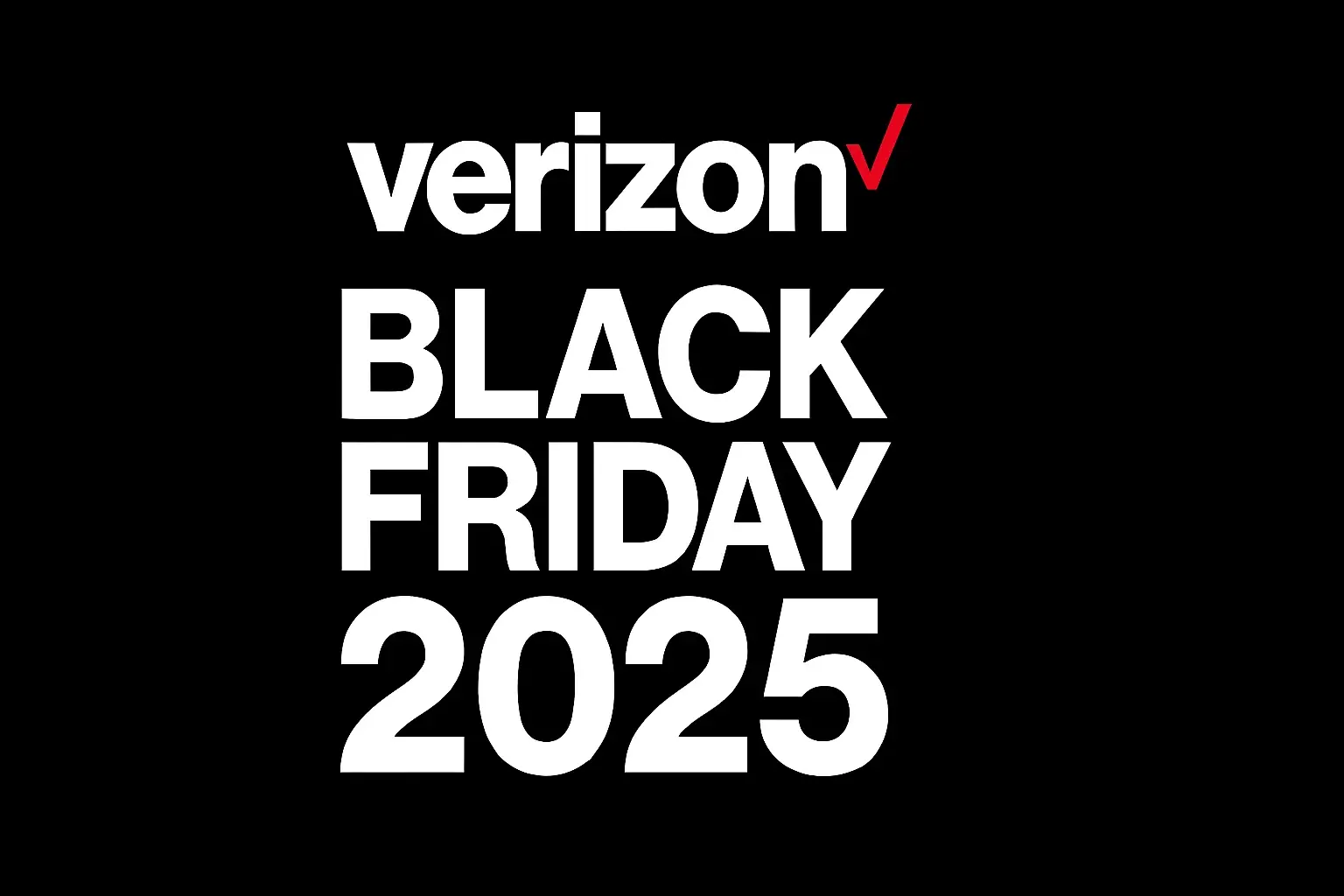What Is Fios By Verizon?

Discover Fios by Verizon, a premier fiber-optic internet service offering unparalleled speeds, reliability, and a superior home entertainment experience. This comprehensive guide will demystify Fios, exploring its technology, plans, and why it stands out in today's competitive broadband landscape.
What Exactly Is Fios By Verizon?
Fios by Verizon, short for Fiber Optic Service, is a high-speed internet, television, and home phone service delivered through a pure fiber-optic network. Unlike traditional cable or DSL services that often rely on a mix of copper and fiber, Fios utilizes fiber-optic cables all the way to your home. This direct fiber connection is the key to its remarkable performance, offering symmetrical download and upload speeds, exceptional reliability, and a future-proof infrastructure that supports the ever-increasing demands of modern digital life. For users seeking the fastest, most consistent internet connection for streaming, gaming, remote work, and smart home devices, Fios represents a top-tier solution.
The Magic Behind the Speed: How Fios Works
The exceptional performance of Fios is rooted in its underlying technology: fiber optics. Understanding this technology is crucial to appreciating why Fios consistently ranks among the best internet services available.
Fiber-Optic Technology Explained
Fiber-optic cables are made of incredibly thin strands of glass or plastic, each about the diameter of a human hair. These strands transmit data as pulses of light. At the source, data is converted into light signals. These light signals then travel through the fiber-optic cable at nearly the speed of light. At the destination, the light signals are converted back into data that your devices can understand. This process is incredibly efficient and virtually instantaneous.
Key Advantages of Fiber Optics
The use of fiber optics brings several significant advantages over older technologies:
- Unmatched Speed: Fiber optics can carry data at much higher frequencies and bandwidths than copper wires, enabling significantly faster download and upload speeds.
- Symmetrical Speeds: A major differentiator for Fios is its ability to offer symmetrical upload and download speeds. This means your uploads are as fast as your downloads, which is critical for video conferencing, uploading large files, live streaming, and online gaming.
- Reliability: Fiber optic cables are less susceptible to electromagnetic interference, weather conditions, and signal degradation compared to copper. This leads to a more stable and consistent connection.
- Lower Latency: Latency, the delay in data transmission, is significantly lower with fiber optics. This is vital for real-time applications like online gaming and video calls, where even milliseconds matter.
- Future-Proofing: The infrastructure is designed to handle future increases in data demand. As our digital lives become more data-intensive, fiber optic networks are better equipped to scale.
Understanding Fios Internet Plans
Verizon Fios offers a range of internet plans designed to cater to different user needs and budgets. The primary differentiator among these plans is the internet speed, measured in Megabits per second (Mbps). It's important to choose a plan that aligns with your household's internet usage habits.
Decoding the Speed Tiers
As of 2025, Verizon Fios typically offers several speed tiers, often presented as symmetrical download and upload speeds. Common tiers include:
- Fios 300 Mbps: Ideal for smaller households or those with moderate internet usage. This speed is sufficient for browsing, email, social media, streaming HD content on a few devices, and basic online gaming.
- Fios 500 Mbps: A popular choice for many households, offering a significant upgrade. This speed can comfortably handle multiple users streaming 4K content simultaneously, extensive online gaming, video conferencing for remote work, and managing a growing number of smart home devices.
- Fios Gigabit Connection (often 1 Gbps or higher): This is Verizon's premium offering, providing blazing-fast speeds. It's perfect for power users, large families with numerous connected devices, serious gamers, content creators, and anyone who needs the absolute fastest and most responsive internet connection available for demanding applications and simultaneous heavy usage across many devices.
When selecting a speed, consider the number of devices connected, the types of activities (streaming 4K vs. HD, gaming, large file transfers), and whether multiple users will be online simultaneously. A good rule of thumb is to aim for a speed that is at least double your estimated peak usage requirement.
Bundling Options: Internet, TV, and Phone
Verizon Fios offers the convenience of bundling its services. You can combine Fios Internet with Fios TV and Fios Home Phone to create a package that suits your household's entertainment and communication needs. Bundling often comes with cost savings compared to subscribing to each service individually. These bundles can range from basic internet and TV packages to comprehensive options with premium channels and unlimited nationwide calling.
Pricing, Fees, and Contract Considerations (2025)
Pricing for Fios plans can vary based on your location, the specific speed tier you choose, and any promotional offers available. As of 2025, expect monthly prices to range from approximately $40-$60 for lower-speed plans to $80-$100+ for gigabit speeds. It's crucial to look beyond the advertised price:
- Equipment Rental Fees: While some plans may include a router, others might charge a monthly fee for equipment rental.
- Installation Fees: Professional installation typically incurs a one-time fee, though this is often waived with promotional offers.
- Taxes and Surcharges: These are added to your monthly bill and can increase the total cost.
- Contract Terms: Verizon Fios often offers plans with no annual contracts, providing flexibility. However, some promotional pricing might be tied to a contract period. Always read the fine print to understand any commitments.
It's advisable to check Verizon's official website or speak with a representative for the most current pricing and offers in your specific area.
Fios TV: Beyond Basic Cable
Fios TV offers a compelling alternative to traditional cable television, leveraging the same fiber-optic network for high-definition picture and sound quality. It provides a robust lineup of channels and features designed for modern viewers.
Exploring Fios TV Channel Packages
Verizon Fios offers a variety of channel packages, often categorized by the number and type of channels included. These packages are designed to cater to different viewing preferences:
- Fios TV Local: A basic package usually including popular local channels and a selection of national networks.
- Fios TV Essentials: A mid-tier package that expands on the local channels, adding more entertainment, news, and sports channels.
- Fios TV Preferred HD: A more comprehensive package with a wider array of premium sports, movie, and entertainment channels.
- Fios TV Premier HD: The top-tier package, offering the most extensive selection of channels, including premium movie networks like HBO, Showtime, and Starz, along with specialized sports channels.
Customers can often customize their packages further by adding specific sports tiers, international channels, or premium movie channels.
On-Demand Content and Advanced Features
Fios TV stands out with its extensive on-demand library and advanced features. Subscribers gain access to thousands of movies and TV shows available to watch anytime, without commercials for many titles. Key features include:
- DVR Services: Fios offers DVR (Digital Video Recorder) boxes that allow you to record live TV, pause, rewind, and fast-forward. Multi-room DVR functionality is often available, letting you watch and manage recordings from multiple TVs in your home.
- HD Quality: All Fios TV channels are broadcast in high definition, providing a crisp and clear viewing experience.
- Interactive Program Guide: A user-friendly guide that makes it easy to browse channels, schedule recordings, and access on-demand content.
The Fios TV App: Entertainment Anywhere
Complementing the in-home experience, the Fios TV app allows subscribers to watch live TV and on-demand content on their smartphones, tablets, and computers. This means you can catch your favorite shows or sports games even when you're away from your main television set, extending your entertainment options beyond the living room.
Fios Home Phone: Reliable Landline Connectivity
For those who still value a traditional landline, Fios Home Phone offers a digital voice service that runs over the same fiber-optic network. This ensures clear call quality and reliability. Fios Phone plans typically include:
- Unlimited Nationwide Calling: Many plans offer unlimited calling to the U.S., Canada, and Mexico.
- International Calling Options: Various international calling plans are available for users who frequently call overseas.
- Voicemail and Other Features: Standard phone features like voicemail, caller ID, call waiting, and call forwarding are included.
The advantage of Fios Phone is its integration with the fiber network, which can offer superior voice clarity and reliability compared to older analog phone lines.
Is Fios Available in Your Area?
The primary limitation of Fios is its availability. Verizon's fiber-optic network is not deployed nationwide. Fios is primarily available in select metropolitan areas and their surrounding suburbs across the Northeastern United States, including states like New York, New Jersey, Pennsylvania, Massachusetts, Virginia, and Maryland, among others. To check if Fios is available at your specific address, you will need to visit the Verizon Fios website and enter your zip code or full address. Availability can even vary by neighborhood within a city.
Fios vs. The Competition: A 2025 Comparison
Understanding how Fios stacks up against other internet service providers (ISPs) is crucial for making an informed decision. In 2025, the competitive landscape includes cable, DSL, and emerging 5G home internet options.
Fios vs. Cable Internet
Cable internet, provided by companies like Comcast (Xfinity) and Spectrum, uses coaxial cable lines, which are a hybrid of copper and fiber.
| Feature | Fios by Verizon | Cable Internet (e.g., Xfinity, Spectrum) |
|---|---|---|
| Technology | Pure Fiber-Optic (FTTH) | Hybrid Fiber-Coaxial (HFC) |
| Download Speeds | Excellent, up to 2 Gbps or higher | Excellent, up to 2 Gbps or higher |
| Upload Speeds | Symmetrical (same as download) | Significantly slower than download (e.g., 10-50 Mbps for gigabit plans) |
| Reliability | Very High (less susceptible to interference) | High, but can be affected by network congestion and interference |
| Latency | Very Low | Low, but generally higher than fiber |
| Availability | Limited to specific Northeastern regions | Widespread across most urban and suburban areas |
Key Takeaway: Fios excels in upload speeds and reliability due to its pure fiber infrastructure. Cable is more widely available and offers comparable download speeds, but its upload speeds are a significant limitation for power users.
Fios vs. DSL Internet
DSL (Digital Subscriber Line) internet uses existing telephone lines (copper wires) to transmit data. Providers like AT&T and CenturyLink offer DSL.
| Feature | Fios by Verizon | DSL Internet (e.g., AT&T, CenturyLink) |
|---|---|---|
| Technology | Pure Fiber-Optic (FTTH) | Digital Subscriber Line (DSL) over copper phone lines |
| Download Speeds | Excellent, up to 2 Gbps or higher | Varies greatly, typically 10-100 Mbps, slower the further you are from the central office |
| Upload Speeds | Symmetrical (same as download) | Very slow, often 1-10 Mbps |
| Reliability | Very High | Moderate, can be affected by distance and line quality |
| Latency | Very Low | Higher than fiber and cable |
| Availability | Limited to specific Northeastern regions | Widespread, especially in rural and underserved areas |
Key Takeaway: Fios is vastly superior to DSL in terms of speed, reliability, and latency. DSL is primarily a fallback option for areas where cable or fiber is not available.
Fios vs. 5G Home Internet
5G Home Internet, offered by providers like Verizon and T-Mobile, uses wireless 5G cellular networks to deliver internet to your home.
| Feature | Fios by Verizon | 5G Home Internet (e.g., Verizon, T-Mobile) |
|---|---|---|
| Technology | Pure Fiber-Optic (FTTH) | Wireless 5G cellular network |
| Download Speeds | Excellent, up to 2 Gbps or higher | Variable, typically 100-300 Mbps, can reach higher |
| Upload Speeds | Symmetrical (same as download) | Variable, typically slower than download |
| Reliability | Very High (wired connection) | Moderate to High, dependent on signal strength, network congestion, and weather |
| Latency | Very Low | Low to Moderate, generally higher than fiber |
| Availability | Limited to specific Northeastern regions | Expanding rapidly, available in many urban and suburban areas |
| Installation | Professional installation often required | Self-installation typically easy |
Key Takeaway: Fios offers more consistent and higher symmetrical speeds and lower latency than 5G Home Internet. 5G Home Internet is a strong wireless alternative, offering flexibility and ease of setup, but its performance can be more variable than a wired fiber connection.
Installation and Equipment Guide
Getting Fios up and running involves a straightforward installation process and specific equipment.
The Fios Installation Process: What to Expect
Verizon typically requires a professional installation for Fios to ensure the fiber-optic lines are properly connected to your home and equipment. Here's a general overview:
- Scheduling: After signing up, you'll schedule an appointment with a Verizon technician.
- On-Site Work: The technician will run a fiber optic cable from the nearest network access point (often a box on the street or side of your house) into your home. They will then install a Network Interface Device (NID) and an Optical Network Terminal (ONT) inside your home. The ONT is the device that converts the light signals from the fiber into electrical signals that your router can use.
- Equipment Setup: The technician will connect your Fios router to the ONT and ensure your internet service is active and performing optimally. If you're also getting Fios TV and Phone, they will set up the necessary equipment (set-top boxes, phone adapters) and test those services as well.
- Duration: The installation typically takes 2-4 hours, depending on the complexity of the setup and the services ordered.
Verizon often waives installation fees with certain promotions, so be sure to ask about this when signing up.
Understanding Your Fios Router and Equipment
The core equipment for Fios includes:
- Optical Network Terminal (ONT): This is the device that terminates the fiber optic cable and converts optical signals to electrical signals. It's the gateway to your home network.
- Fios Router: Verizon provides its own branded routers. These are designed to work seamlessly with the Fios network and support Wi-Fi connectivity for all your wireless devices. You can choose to rent a router from Verizon or, in some cases, use your own compatible router. Renting typically ensures full compatibility and easier troubleshooting with Verizon support.
- Set-Top Boxes (for Fios TV): If you subscribe to Fios TV, you'll receive set-top boxes for each television. These boxes receive the TV signal from the ONT and decode it for your TV.
It's important to note that while Verizon offers its own routers, some users prefer to use third-party routers for advanced features or to extend Wi-Fi coverage. However, using your own router might require more technical setup and may not be fully supported by Verizon for all troubleshooting issues.
Customer Support and Network Reliability
When choosing an ISP, customer support and network reliability are paramount. Verizon has a reputation for investing heavily in its fiber-optic infrastructure, which contributes to high reliability.
- Network Uptime: Fios networks generally boast very high uptime percentages, meaning your internet is less likely to experience unexpected outages compared to some other technologies. The inherent stability of fiber optics plays a significant role here.
- Customer Service: Verizon offers multiple channels for customer support, including online chat, phone support, and a comprehensive online help center. As with any large telecommunications company, customer experiences can vary, but their commitment to the Fios network often translates to responsive technical support for service-related issues.
- Self-Help Resources: Verizon provides extensive online resources, FAQs, and troubleshooting guides that can help users resolve common issues independently.
For users who prioritize a stable, consistent connection and are located within the Fios service area, the reliability factor is a major draw.
Making the Switch to Fios: A Step-by-Step Approach
Transitioning to Fios is a process that requires a few key steps to ensure a smooth experience. By following this guide, you can make the switch with confidence.
- Check Availability: The first and most critical step is to verify if Fios is available at your exact address. Visit the Verizon Fios website and use their address checker.
- Assess Your Needs: Determine your household's internet usage. How many people will be using the internet? What activities will they be doing (streaming, gaming, working)? This will help you choose the right speed tier.
- Review Plans and Pricing: Explore the different Fios Internet, TV, and Phone plans. Pay close attention to the advertised speeds, channel lineups, and bundle discounts. Note any promotional pricing and the duration of those offers.
- Understand Equipment and Installation: Familiarize yourself with the equipment Verizon provides (router, ONT, set-top boxes) and the installation process. Check if installation fees are being waived or discounted.
- Compare Offers: If you're currently with another provider, compare Fios's offers against your current service and other available alternatives in your area. Look at the total monthly cost, including all fees and potential equipment rental charges.
- Sign Up: Once you've made your decision, sign up for Fios service either online or by calling Verizon. Be prepared to provide your address, contact information, and payment details.
- Schedule Installation: Work with Verizon to schedule your professional installation appointment at a time that is convenient for you.
- Prepare for Installation Day: Ensure clear access to the areas where the technician will be working. If you have specific placement preferences for the ONT or router, communicate these to the technician.
- Post-Installation Testing: After the installation is complete, the technician will help you test your connection. It's a good idea to run speed tests on multiple devices and test all your services (internet, TV, phone) to confirm everything is working as expected.
- Cancel Your Old Service (Carefully): Once you are satisfied with your Fios service, you can proceed with canceling your previous internet, TV, or phone provider. Be mindful of any early termination fees from your old provider.
By systematically going through these steps, you can ensure a seamless transition to Fios and begin enjoying its high-speed benefits.
Conclusion: Why Fios Might Be Your Next Best Internet Choice
In the quest for superior home internet, Fios by Verizon emerges as a powerful contender, particularly for those residing within its service footprint. Its foundation in pure fiber-optic technology delivers an unparalleled combination of speed, reliability, and low latency. The symmetrical upload and download speeds are a game-changer for modern internet usage, supporting seamless video conferencing, rapid file uploads, and lag-free online gaming. While availability remains its primary constraint, for the millions of households that can access it, Fios offers a premium internet experience that is difficult to match. The comprehensive TV and phone services further enhance its appeal as a bundled solution. As digital demands continue to escalate in 2025 and beyond, investing in a future-proof fiber network like Fios is a strategic decision for any household seeking the best in connectivity and home entertainment.





